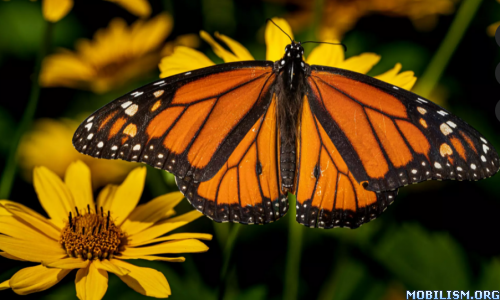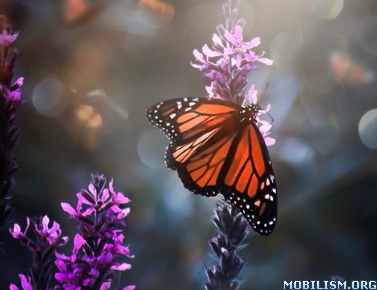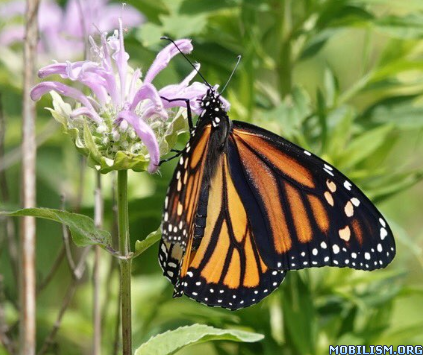July 27 is the 208th day of the year (209th in leap years) in the Gregorian calendar; 157 days remain until the end of the year.

Pre-1600
1054 – Siward, Earl of Northumbria, invades Scotland and defeats Macbeth, King of Scotland somewhere north of the Firth of Forth.
1189 – Friedrich Barbarossa arrives at Niš, the capital of Serbian King Stefan Nemanja, during the Third Crusade.
1202 – Georgian–Seljuk wars: At the Battle of Basian the Kingdom of Georgia defeats the Sultanate of Rum.
1214 – Battle of Bouvines: Philip II of France decisively defeats Imperial, English and Flemish armies, effectively ending John of England's Angevin Empire.
1299 – According to Edward Gibbon, Osman I invades the territory of Nicomedia for the first time, usually considered to be the founding day of the Ottoman state.
1302 – Battle of Bapheus: Decisive Ottoman victory over the Byzantines opening up Bithynia for Turkish conquest.
1549 – The Jesuit priest Francis Xavier's ship reaches Japan.
1601-1900
1663 – The English Parliament passes the second Navigation Act requiring that all goods bound for the American colonies have to be sent in English ships from English ports. After the Acts of Union 1707, Scotland would be included in the Act.
1689 – Glorious Revolution: The Battle of Killiecrankie is a victory for the Jacobites.[1]
1694 – A Royal charter is granted to the Bank of England.
1714 – The Great Northern War: The first significant victory of the Russian Navy in the naval battle of Gangut against the Swedish Navy near the Hanko Peninsula.[2]
1775 – Founding of the U.S. Army Medical Department: The Second Continental Congress passes legislation establishing "an hospital for an army consisting of 20,000 men."
1778 – American Revolution: First Battle of Ushant: British and French fleets fight to a standoff.
1789 – The first U.S. federal government agency, the Department of Foreign Affairs, is established (it will be later renamed Department of State).
1794 – French Revolution: Maximilien Robespierre is arrested after encouraging the execution of more than 17,000 "enemies of the Revolution".
1816 – Seminole Wars: The Battle of Negro Fort ends when a hot shot cannonball fired by US Navy Gunboat No. 154 explodes the fort's Powder Magazine, killing approximately 275. It is considered the deadliest single cannon shot in US history.
1857 – Indian Rebellion: Sixty-eight men hold out for eight days against a force of 2,500 to 3,000 mutinying sepoys and 8,000 irregular forces.
1865 – Welsh settlers arrive at Chubut in Argentina.
1866 – The first permanent transatlantic telegraph cable is successfully completed, stretching from Valentia Island, Ireland, to Heart's Content, Newfoundland.
1880 – Second Anglo-Afghan War: Battle of Maiwand: Afghan forces led by Mohammad Ayub Khan defeat the British Army in battle near Maiwand, Afghanistan.
1890 – Vincent van Gogh shoots himself and dies two days later.
1900 – Kaiser Wilhelm II makes a speech comparing Germans to Huns; for years afterwards, "Hun" would be a disparaging name for Germans.
1901-present
1917 – World War I: The Allies reach the Yser Canal at the Battle of Passchendaele.
1919 – The Chicago Race Riot erupts after a racial incident occurred on a South Side beach, leading to 38 fatalities and 537 injuries over a five-day period.
1921 – Researchers at the University of Toronto, led by biochemist Frederick Banting, prove that the hormone insulin regulates blood sugar.
1922 – The Parliament of Finland passed a law about illegitimate children, which appointed Finnish municipalities to monitor the interests of unmarried mothers and their children.[3]
1929 – The Geneva Convention of 1929, dealing with treatment of prisoners-of-war, is signed by 53 nations.
1940 – The animated short A Wild Hare is released, introducing the character of Bugs Bunny.
1942 – World War II: Allied forces successfully halt the final Axis advance into Egypt.
1947 – In Vatican City, Rome, canonization of Catherine Labouré, the saint whose apparitions of the Virgin Mary originated the worldwide diffusion of the Miraculous Medal.[4][5]
1949 – Initial flight of the de Havilland Comet, the first jet-powered airliner.
1953 – Cessation of hostilities is achieved in the Korean War when the United States, China, and North Korea sign an armistice agreement. Syngman Rhee, President of South Korea, refuses to sign but pledges to observe the armistice.
1955 – The Austrian State Treaty restores Austrian sovereignty.
1955 – El Al Flight 402 is shot down by two fighter jets after straying into Bulgarian air space. All 58 people onboard are killed.
1959 – The Continental League is announced as baseball's "3rd major league" in the United States.
1964 – Vietnam War: Five thousand more American military advisers are sent to South Vietnam bringing the total number of United States forces in Vietnam to 21,000.
1974 – Watergate scandal: The House of Representatives Judiciary Committee votes 27 to 11 to recommend the first article of impeachment (for obstruction of justice) against President Richard Nixon.
1975 – Mayor of Jaffna and former MP Alfred Duraiappah is shot dead.
1981 – While landing at Chihuahua International Airport, Aeromexico Flight 230 overshoots the runway. Thirty-two of the 66 passengers and crew on board the DC-9 are killed.[6]
1983 – Black July: Eighteen Tamil political prisoners at the Welikada high security prison in Colombo are massacred by Sinhalese prisoners, the second such massacre in two days.
1989 – While attempting to land at Tripoli International Airport in Libya, Korean Air Flight 803 crashes just short of the runway. Seventy-five of the 199 passengers and crew and four people on the ground are killed, in the second accident involving a DC-10 in less than two weeks, the first being United Airlines Flight 232.
1990 – The Supreme Soviet of the Belarusian Soviet Republic declares independence of Belarus from the Soviet Union. Until 1996 the day is celebrated as the Independence Day of Belarus; after a referendum held that year the celebration of independence is moved to June 3.
1990 – The Jamaat al Muslimeen attempt a coup d'état in Trinidad and Tobago.
1995 – The Korean War Veterans Memorial is dedicated in Washington, D.C.
1996 – In Atlanta, United States, a pipe bomb explodes at Centennial Olympic Park during the 1996 Summer Olympics.
1997 – About 50 people are killed in the Si Zerrouk massacre in Algeria.
2002 – Ukraine airshow disaster: A Sukhoi Su-27 fighter crashes during an air show at Lviv, Ukraine killing 77 and injuring more than 500 others, making it the deadliest air show disaster in history.
2005 – After an incident during STS-114, NASA grounds the Space Shuttle, pending an investigation of the continuing problem with the shedding of foam insulation from the external fuel tank.
2015 – At least seven people are killed and many injured after gunmen attack an Indian police station in Punjab.
2016 – At a news conference, U.S. presidential candidate Donald Trump expresses the hope that Russians can recover thirty thousand emails that were deleted from Hillary Clinton's personal server.[7]

Pre-1600
1054 – Siward, Earl of Northumbria, invades Scotland and defeats Macbeth, King of Scotland somewhere north of the Firth of Forth.
1189 – Friedrich Barbarossa arrives at Niš, the capital of Serbian King Stefan Nemanja, during the Third Crusade.
1202 – Georgian–Seljuk wars: At the Battle of Basian the Kingdom of Georgia defeats the Sultanate of Rum.
1214 – Battle of Bouvines: Philip II of France decisively defeats Imperial, English and Flemish armies, effectively ending John of England's Angevin Empire.
1299 – According to Edward Gibbon, Osman I invades the territory of Nicomedia for the first time, usually considered to be the founding day of the Ottoman state.
1302 – Battle of Bapheus: Decisive Ottoman victory over the Byzantines opening up Bithynia for Turkish conquest.
1549 – The Jesuit priest Francis Xavier's ship reaches Japan.
1601-1900
1663 – The English Parliament passes the second Navigation Act requiring that all goods bound for the American colonies have to be sent in English ships from English ports. After the Acts of Union 1707, Scotland would be included in the Act.
1689 – Glorious Revolution: The Battle of Killiecrankie is a victory for the Jacobites.[1]
1694 – A Royal charter is granted to the Bank of England.
1714 – The Great Northern War: The first significant victory of the Russian Navy in the naval battle of Gangut against the Swedish Navy near the Hanko Peninsula.[2]
1775 – Founding of the U.S. Army Medical Department: The Second Continental Congress passes legislation establishing "an hospital for an army consisting of 20,000 men."
1778 – American Revolution: First Battle of Ushant: British and French fleets fight to a standoff.
1789 – The first U.S. federal government agency, the Department of Foreign Affairs, is established (it will be later renamed Department of State).
1794 – French Revolution: Maximilien Robespierre is arrested after encouraging the execution of more than 17,000 "enemies of the Revolution".
1816 – Seminole Wars: The Battle of Negro Fort ends when a hot shot cannonball fired by US Navy Gunboat No. 154 explodes the fort's Powder Magazine, killing approximately 275. It is considered the deadliest single cannon shot in US history.
1857 – Indian Rebellion: Sixty-eight men hold out for eight days against a force of 2,500 to 3,000 mutinying sepoys and 8,000 irregular forces.
1865 – Welsh settlers arrive at Chubut in Argentina.
1866 – The first permanent transatlantic telegraph cable is successfully completed, stretching from Valentia Island, Ireland, to Heart's Content, Newfoundland.
1880 – Second Anglo-Afghan War: Battle of Maiwand: Afghan forces led by Mohammad Ayub Khan defeat the British Army in battle near Maiwand, Afghanistan.
1890 – Vincent van Gogh shoots himself and dies two days later.
1900 – Kaiser Wilhelm II makes a speech comparing Germans to Huns; for years afterwards, "Hun" would be a disparaging name for Germans.
1901-present
1917 – World War I: The Allies reach the Yser Canal at the Battle of Passchendaele.
1919 – The Chicago Race Riot erupts after a racial incident occurred on a South Side beach, leading to 38 fatalities and 537 injuries over a five-day period.
1921 – Researchers at the University of Toronto, led by biochemist Frederick Banting, prove that the hormone insulin regulates blood sugar.
1922 – The Parliament of Finland passed a law about illegitimate children, which appointed Finnish municipalities to monitor the interests of unmarried mothers and their children.[3]
1929 – The Geneva Convention of 1929, dealing with treatment of prisoners-of-war, is signed by 53 nations.
1940 – The animated short A Wild Hare is released, introducing the character of Bugs Bunny.
1942 – World War II: Allied forces successfully halt the final Axis advance into Egypt.
1947 – In Vatican City, Rome, canonization of Catherine Labouré, the saint whose apparitions of the Virgin Mary originated the worldwide diffusion of the Miraculous Medal.[4][5]
1949 – Initial flight of the de Havilland Comet, the first jet-powered airliner.
1953 – Cessation of hostilities is achieved in the Korean War when the United States, China, and North Korea sign an armistice agreement. Syngman Rhee, President of South Korea, refuses to sign but pledges to observe the armistice.
1955 – The Austrian State Treaty restores Austrian sovereignty.
1955 – El Al Flight 402 is shot down by two fighter jets after straying into Bulgarian air space. All 58 people onboard are killed.
1959 – The Continental League is announced as baseball's "3rd major league" in the United States.
1964 – Vietnam War: Five thousand more American military advisers are sent to South Vietnam bringing the total number of United States forces in Vietnam to 21,000.
1974 – Watergate scandal: The House of Representatives Judiciary Committee votes 27 to 11 to recommend the first article of impeachment (for obstruction of justice) against President Richard Nixon.
1975 – Mayor of Jaffna and former MP Alfred Duraiappah is shot dead.
1981 – While landing at Chihuahua International Airport, Aeromexico Flight 230 overshoots the runway. Thirty-two of the 66 passengers and crew on board the DC-9 are killed.[6]
1983 – Black July: Eighteen Tamil political prisoners at the Welikada high security prison in Colombo are massacred by Sinhalese prisoners, the second such massacre in two days.
1989 – While attempting to land at Tripoli International Airport in Libya, Korean Air Flight 803 crashes just short of the runway. Seventy-five of the 199 passengers and crew and four people on the ground are killed, in the second accident involving a DC-10 in less than two weeks, the first being United Airlines Flight 232.
1990 – The Supreme Soviet of the Belarusian Soviet Republic declares independence of Belarus from the Soviet Union. Until 1996 the day is celebrated as the Independence Day of Belarus; after a referendum held that year the celebration of independence is moved to June 3.
1990 – The Jamaat al Muslimeen attempt a coup d'état in Trinidad and Tobago.
1995 – The Korean War Veterans Memorial is dedicated in Washington, D.C.
1996 – In Atlanta, United States, a pipe bomb explodes at Centennial Olympic Park during the 1996 Summer Olympics.
1997 – About 50 people are killed in the Si Zerrouk massacre in Algeria.
2002 – Ukraine airshow disaster: A Sukhoi Su-27 fighter crashes during an air show at Lviv, Ukraine killing 77 and injuring more than 500 others, making it the deadliest air show disaster in history.
2005 – After an incident during STS-114, NASA grounds the Space Shuttle, pending an investigation of the continuing problem with the shedding of foam insulation from the external fuel tank.
2015 – At least seven people are killed and many injured after gunmen attack an Indian police station in Punjab.
2016 – At a news conference, U.S. presidential candidate Donald Trump expresses the hope that Russians can recover thirty thousand emails that were deleted from Hillary Clinton's personal server.[7]






































